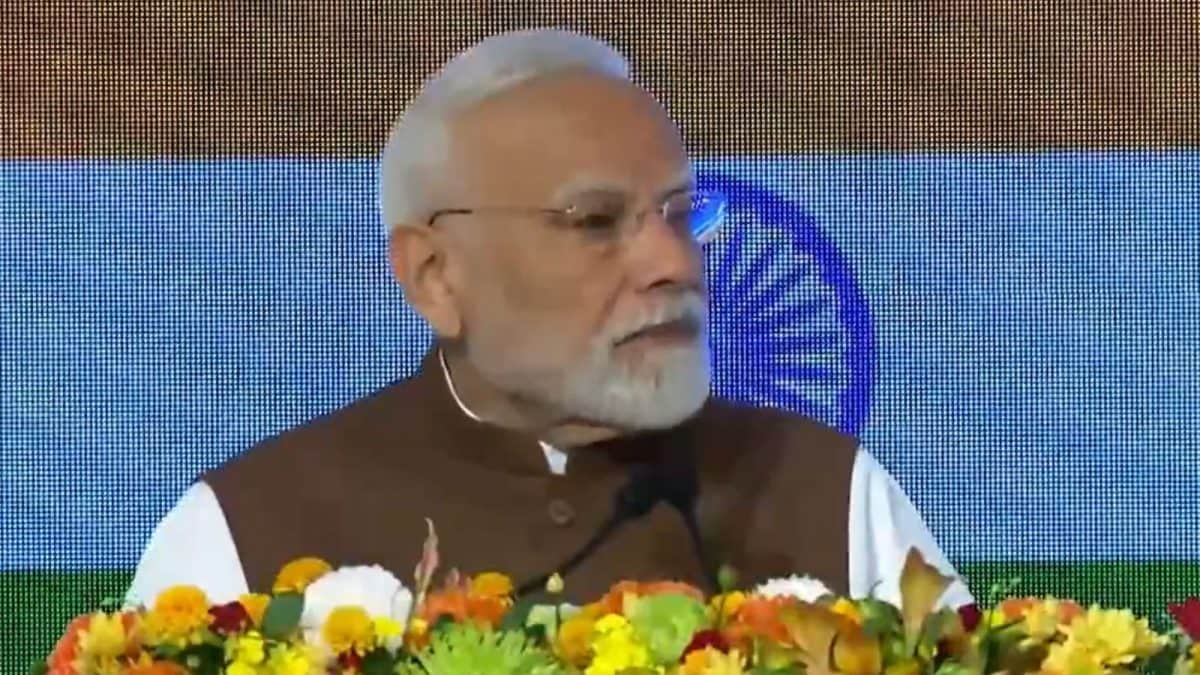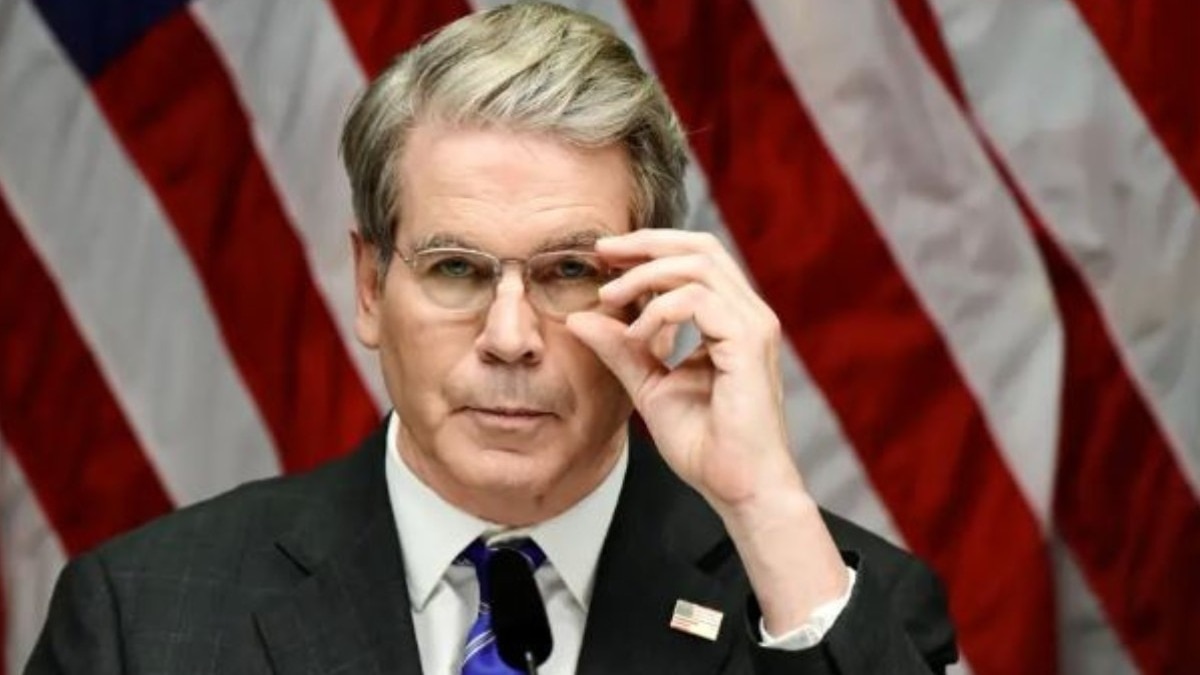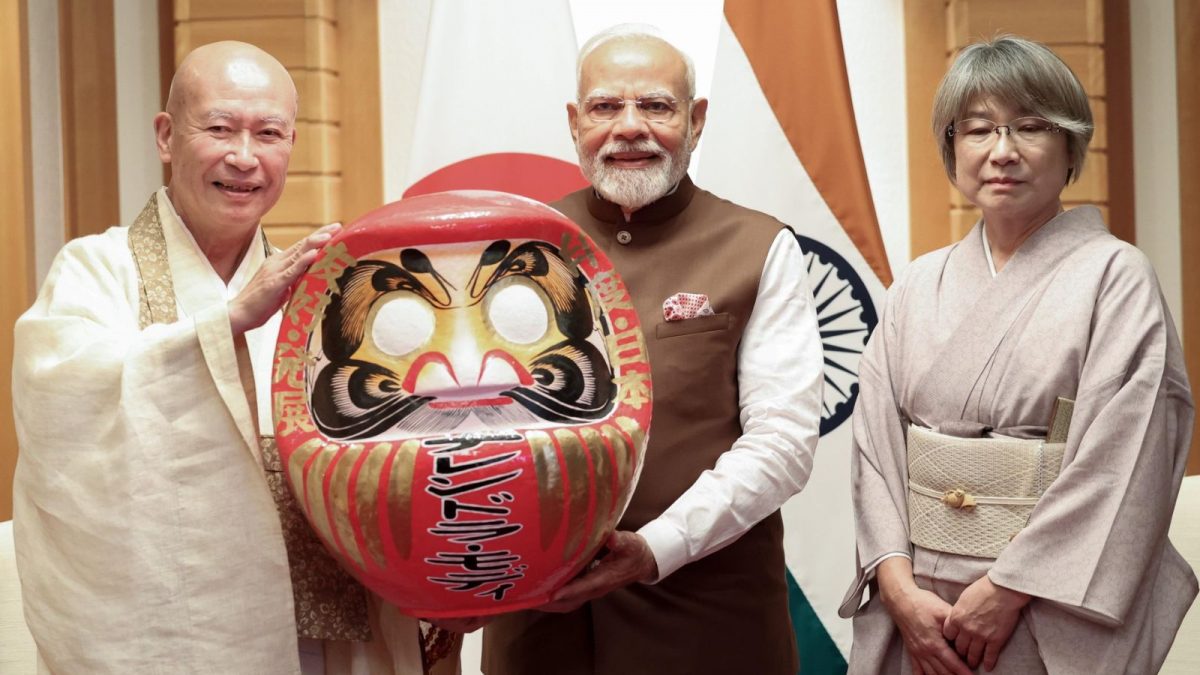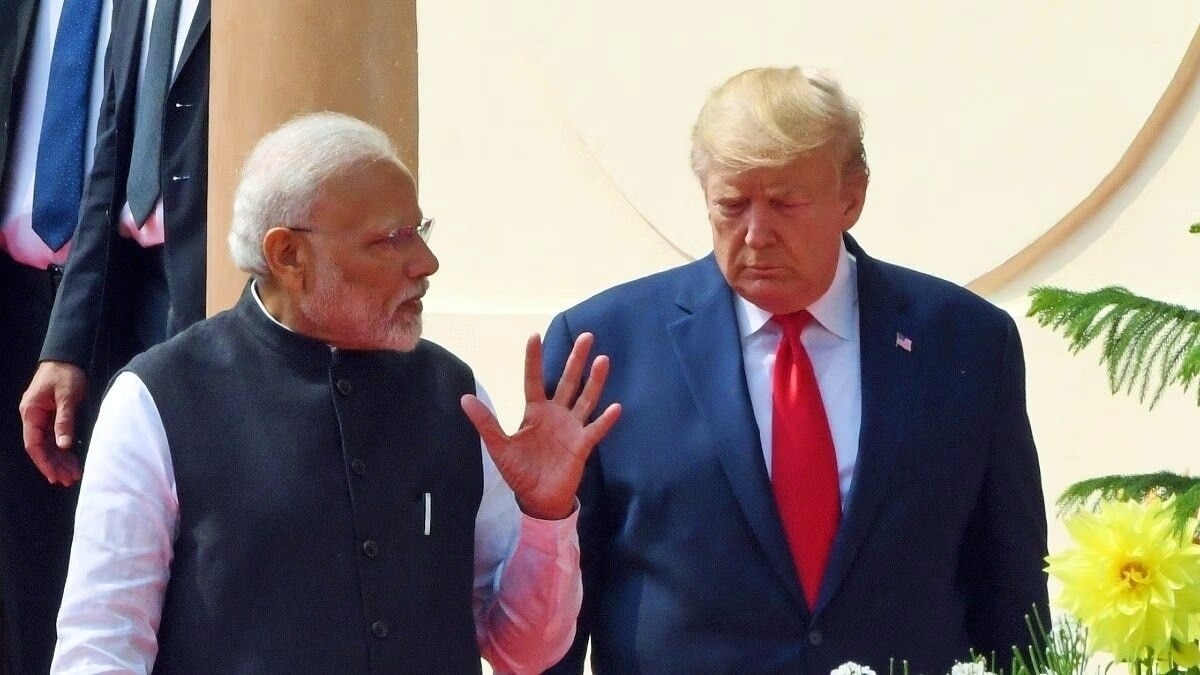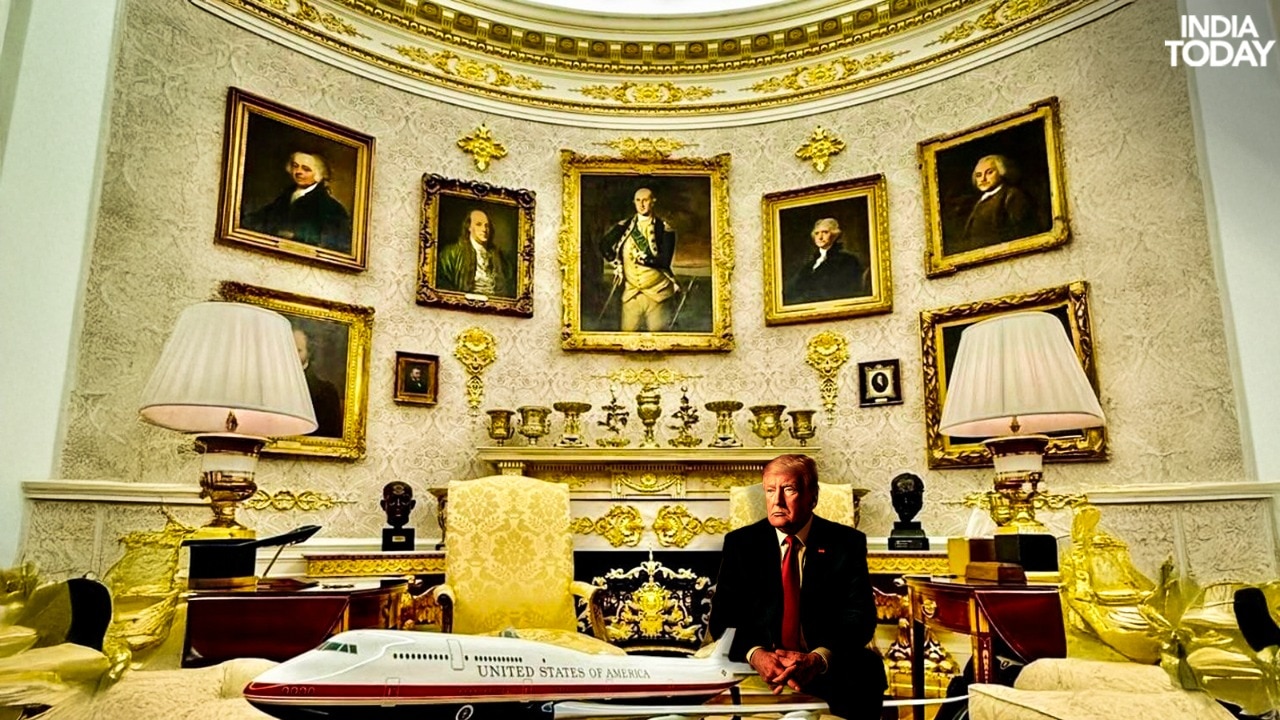Last Updated:July 31, 2025, 15:58 IST
Moments after slapping tariffs on India, Trump pitched a deal to tap what he called Pakistan’s massive oil reserves and hinted the oil could one day fuel its neighbour

US President Donald Trump (Reuters Image)
Just hours after hitting India with 25 per cent tariffs, US President Donald Trump announced an energy partnership with Pakistan, calling it a project to tap into the country’s “massive oil reserves". But is the claim backed by fact, or political theatre?
What Did Trump Say?
Donald Trump took to his social media platform Truth Social to declare a new trade deal with Pakistan, framed as a joint initiative to develop Pakistan’s oil reserves. “We have just concluded a Deal with the Country of Pakistan, whereby Pakistan and the United States will work together on developing their massive Oil Reserves," Trump wrote. “We are in the process of choosing the Oil Company that will lead this Partnership. Who knows, maybe they’ll be selling Oil to India someday!"
The announcement came close on the heels of Washington imposing steep tariffs and penalties on Indian imports, with Trump citing India’s trade surplus and oil ties with Russia.
So, Does Pakistan Actually Have Massive Oil Reserves?
The short answer: Not yet, at least not proven or extractable ones.
According to Worldometer and the US Energy Information Administration, Pakistan’s proven oil reserves stood at 353.5 million barrels as of 2016, placing it 52nd in the world and contributing just 0.021 per cent of global reserves. At its current consumption rate of around 556,000 barrels per day, Pakistan’s reserves would last for less than two years without imports.
Its daily production is just 88,000 barrels, covering less than 15 per cent of domestic needs. The rest, about 85-80 per cent, is imported, mainly from the Middle East.
The ‘Massive Reserve’ Claim: Where Does It Come From?
Pakistan’s recent optimism around untapped oil riches stems from seismic surveys conducted in the Offshore Indus Basin over the past three years. These surveys were reportedly carried out in partnership with an “allied" or “friendly" country, though officials have not publicly named which. Some reports, including those cited by The Week, suggest this could involve Turkey, given the April 2025 exploration agreement with Turkish Petroleum Corporation (TPAO).
In September 2024, Pakistan’s Oil and Gas Regulatory Authority (OGRA) and the Ministry of Energy briefed the federal government on the findings, citing promising geological structures along the Murray Ridge, a tectonically active zone near Pakistan’s coastline. These formations reportedly showed signatures of hydrocarbons in 2D and 3D seismic data.
While local energy commentators have claimed that the estimated deposits could place Pakistan among the world’s top four oil and gas holders, behind only Venezuela, Saudi Arabia, and Iran, no exploratory drilling has taken place to confirm this. As energy analysts repeatedly stress, these are not classified as reserves in any technical sense, since they lack proven recoverability, commercial viability, or third-party validation.
Onshore Discoveries: Real, But Limited
Over the past year, Pakistan has announced several small-scale oil and gas discoveries, mostly by the state-owned Oil & Gas Development Company (OGDCL) and partner entities.
In Sindh, OGDCL reported a new find as recently as June 2025, though details about estimated output remain undisclosed.In Khyber Pakhtunkhwa, gas and condensate reserves were confirmed in Lakki Marwat, with initial production reported at just 2.1 million cubic feet of gas and 74 barrels of oil per day, according to The Week. Additional discoveries were also made in the Kohat Plateau.In Punjab’s Attock region, steady drilling has yielded incremental additions, but no major breakthrough.These announcements have generated headlines but have not significantly boosted Pakistan’s national output, which still stands at just around 88,000 barrels per day, far below the 556,000 barrels/day Pakistan consumes. The gap continues to be bridged by costly imports.
Why Has No One Rushed In To Drill?
Even if promising structures exist, developing Pakistan’s offshore oilfields would be expensive and slow. Energy experts estimate that it could take $5 billion and at least 4-5 years just to start confirmatory drilling and early-stage development.
Additional costs for building pipelines, refineries, ports, and storage infrastructure would push the total outlay far higher.
Pakistan’s ongoing economic crisis, including $126 billion in external debt and a $17.5 billion energy import bill (2023), severely limits its capacity to attract and sustain such capital-intensive ventures. Its refining capacity, currently around 450,000 barrels/day, is already stretched.
On top of that, security risks, especially in Balochistan, where many of these offshore and coastal blocks lie, remain a deterrent for international firms.
What About The Turkey Deal?
In April 2025, Islamabad signed an agreement with Turkey’s state-owned Turkish Petroleum Corporation (TPAO) for offshore exploration. But details remain vague, and no drilling activity has been confirmed under the partnership.
The China Factor: Oil, Influence, And Balochistan
Trump’s sudden interest in Pakistan’s energy sector comes at a time when China already holds a dominant position in Pakistan’s energy and infrastructure landscape through the China-Pakistan Economic Corridor (CPEC), a flagship Belt and Road Initiative project valued at over $60 billion.
Much of China’s investment is concentrated in Balochistan, including the strategically important Gwadar Port and several energy and logistics corridors. The province is also believed to sit atop untapped oil and gas potential, the same region where any US-backed exploration is likely to begin, given the geological surveys in the Offshore Indus Basin and the Murray Ridge.
This sets up a possible geo-economic friction point: if Washington becomes actively involved in oil development in Pakistan, especially in or near Chinese-funded zones, it could challenge Beijing’s long-standing energy interests and introduce strategic competition in a country both powers view as vital to their regional calculations.
Adding to the complexity, Balochistan remains a hotbed of separatist insurgency. Local armed groups have repeatedly targeted Chinese projects and personnel, protesting Islamabad’s centralised control over natural resources. A US entry into the same energy terrain may not only risk similar backlash but also raise fresh questions over resource sovereignty, security liabilities, and political alignment in the region.
So, Is There Oil? Or Just Optics?
While Pakistan has long spoken of significant offshore oil potential, no exploratory drilling, peer-reviewed geological data, or commercial breakthroughs have yet substantiated claims of “massive reserves".
Trump’s announcement, for now, appears to be more about provoking India, wooing Islamabad, and asserting leverage in the broader global trade chessboard.
The News Desk is a team of passionate editors and writers who break and analyse the most important events unfolding in India and abroad. From live updates to exclusive reports to in-depth explainers, the Desk d...Read More
The News Desk is a team of passionate editors and writers who break and analyse the most important events unfolding in India and abroad. From live updates to exclusive reports to in-depth explainers, the Desk d...
Read More
News explainers Trump’s Oil Deal With Pakistan Raises Eyebrows: Does Islamabad Have ‘Massive’ Reserves?
Disclaimer: Comments reflect users’ views, not News18’s. Please keep discussions respectful and constructive. Abusive, defamatory, or illegal comments will be removed. News18 may disable any comment at its discretion. By posting, you agree to our Terms of Use and Privacy Policy.
Read More

 4 weeks ago
4 weeks ago

